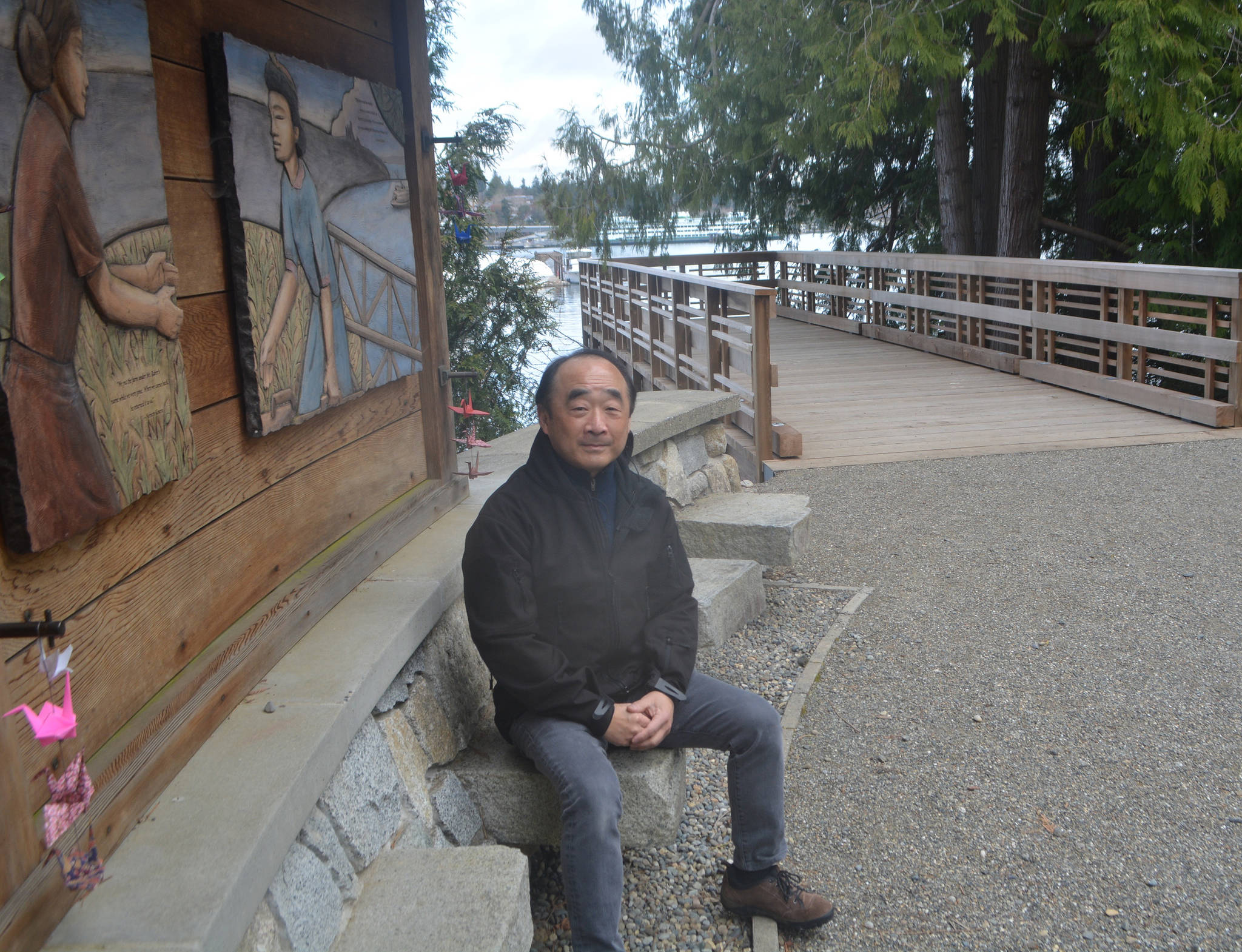Clarence Moriwaki talked about the “1,000-pound elephant in the room.”
The president of the Bainbridge Island Japanese American Community was speaking at the 79th Anniversary of the forced removal of Japanese Americans in World War II last week.
He and some of the survivors of those concentration camps who returned to BI were at the Exclusion Memorial. The survivors later cut the ribbon to the exclusion departure dock, a new part of the memorial that represents the old Eagledale Ferry Dock.
Moriwaki was referring to nationwide violence against Asian Americans that began after former President Trump started calling COVID-19 the “China virus.”
The motto of the BI memorial, “’Let it not happen again’… apparently it’s not enough,” Moriwaki said. “Because it is happening again.”
But things are different than in 1942. Hundreds of thousands of people across the country “stood up and spoke out on behalf of our community,” he said. “This is really a time of hope.”
People on BI spoke out against Japanese internment years ago, but there were no large protests when 276 Japanese Americans from BI were taken away.
“There were no mass rallies outside any of the ten concentration camps, demanding removal and protecting your constitutional rights … Had people been more like Bainbridge Island having your back … had people been more like today …this might have had a different outcome. You might not even be here today because you might never have been removed.”
“Our country is stepping up,” he added, and if racism happens, “We’re not going to tolerate it. We can be a better place.”
Bainbridge Island was different from the rest of the country in 1942, standing up against racism against Japanese Americans. Moriwaki read a letter from the BI Japanese American community. They stood by their neighbors and protected their property while they were gone so they had something to return to.
The Bainbridge Island Review was the only newspaper in the country to reject the government’s actions, and the community opened their arms and hearts in welcoming back the 150 who returned. Moriwaki said we need to remember those dark times in history, and that we must have vigilance to protect our rights. “We will not tolerate intolerance.”
Moriwaki explained that on March 30, 1942, there were 227 BI Japanese Americans waiting for a ferry to take them to the concentration camps. There were 276 Japanese Americans on BI at the time, and the memorial is 276 feet long. Their names are all on the memorial, and Moriwaki took about 11 minutes to read each one.
Val Tollefson, a former mayor and president of the BI Japanese American Exclusion Memorial Association, said listening to all the names being read made him feel like he was observing the actual event.
“Many of you were here at this very place 79 years ago today,” he said of the survivors. “Some were babies in arms. Some were children, some young adults … This memorial was built … to honor your experience.”
Moriwaki said in an interview last week that he felt the hate the past few months at an incident in Everett. Two young adults were kicked out of a store for not wearing masks, and when they passed Moriwaki they yelled at him, blamed him and gave him the finger. Moriwaki said he was glad it happened in the store with witnesses around because he would have feared for his life if it was in the parking lot. He said he didn’t report it to police and wonders how many similar instances go unreported.
In his closing remarks at the ceremony, Moriwaki said we’ve all heard that America is a melting pot. But he said that notion is outdated; it creates an inaccurate vision of each ingredient being diluted.
“We’re a great American stew,” he said. The different ingredients “all come together, and they make some delicious new thing,” but you can still taste each ingredient. “Every ingredient is still part of the great mix.”



